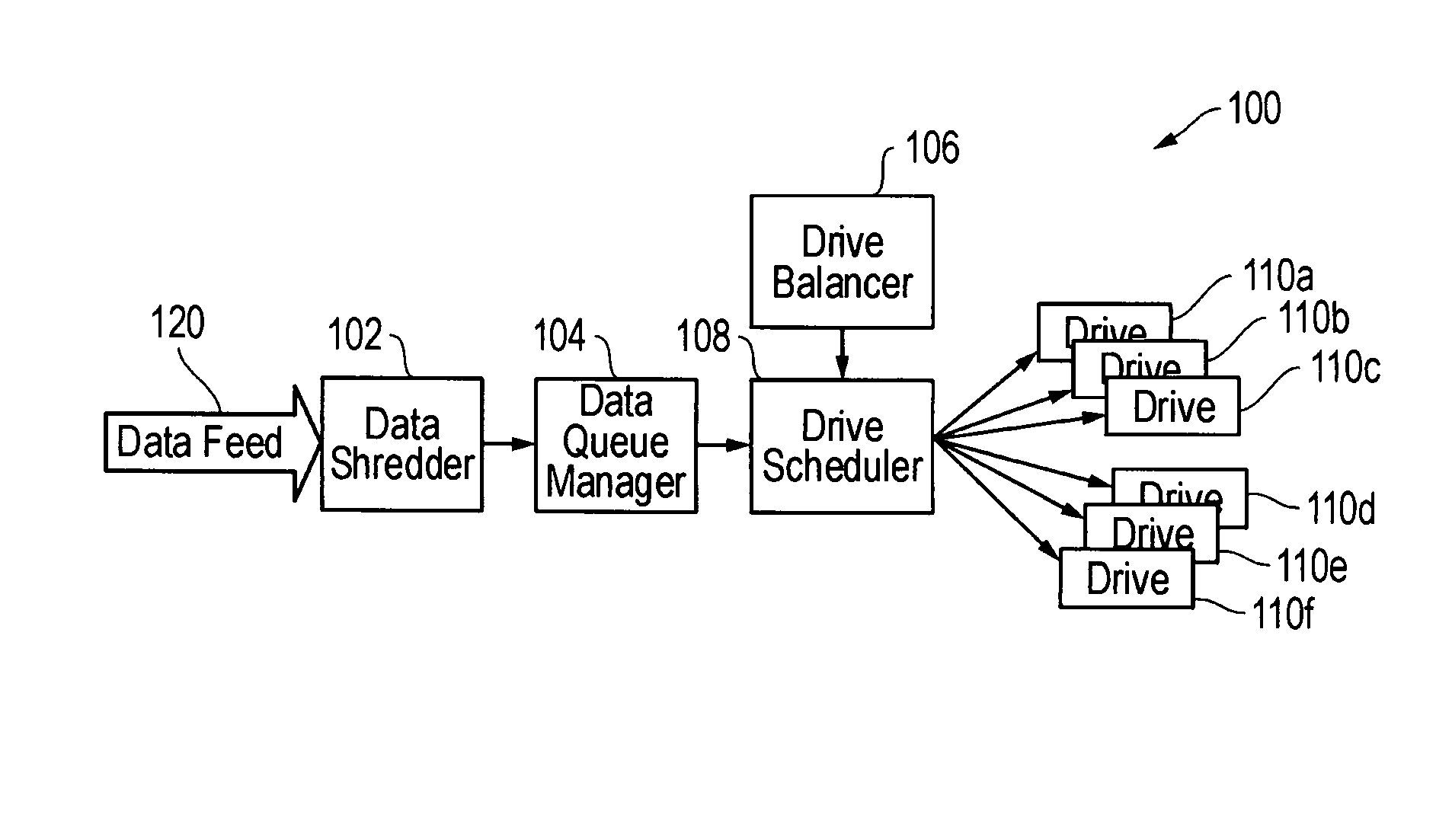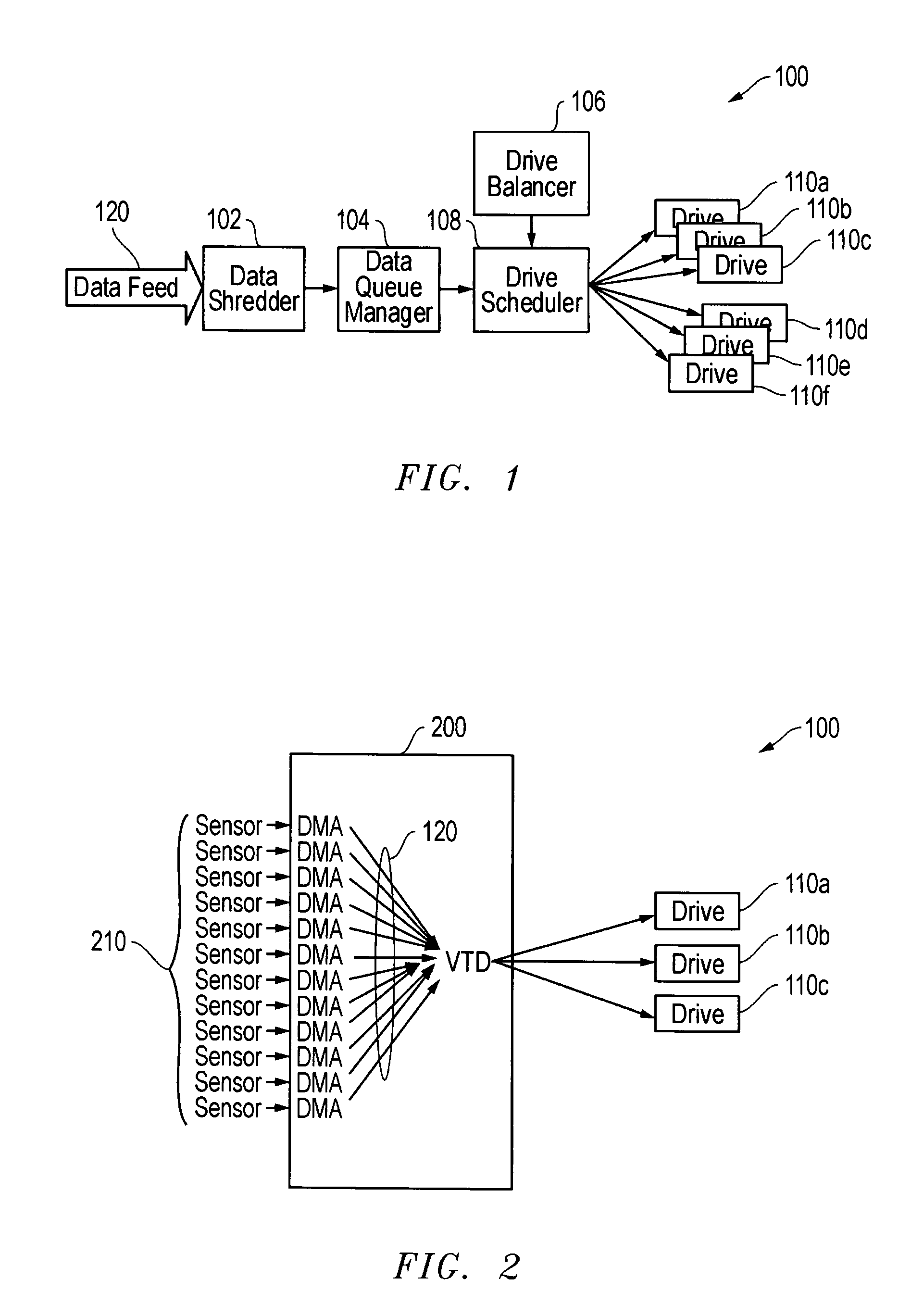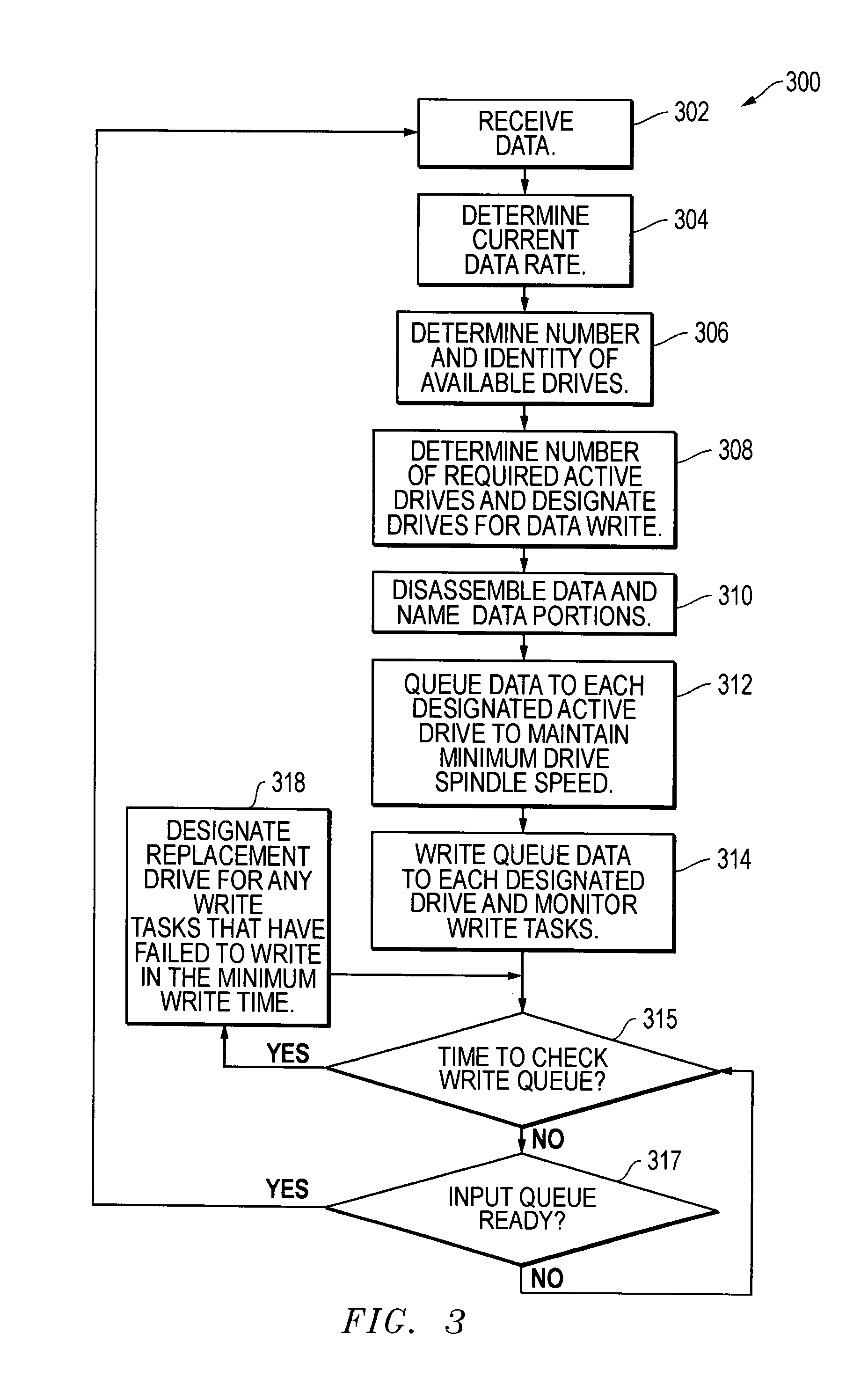Systems and methods for managing tape drive operation
a tape drive and management system technology, applied in the direction of instruments, input/output to record carriers, computing, etc., can solve the problems of inability to manage the drive, the drive management is inefficient, and the loss of even one drive is catastrophic for all transactions, so as to prevent, manage and minimize the latency events
- Summary
- Abstract
- Description
- Claims
- Application Information
AI Technical Summary
Benefits of technology
Problems solved by technology
Method used
Image
Examples
Embodiment Construction
[0021]FIG. 1 illustrates logical components of a VTD system 100 according to one exemplary embodiment of the disclosed systems and methods. As shown, VTD system includes data shredder 102 which is coupled to receive data feed 120. Data shredder 102 is also coupled to provided shredded data to data queue manager 104, which is in turn coupled to provide queued data to drive scheduler 108. Also shown is drive balancer 106 that is coupled to determine and provide the number of needed active drives to drive scheduler 108. Drive scheduler 108 is in turn coupled to schedule and provide data to individual tape drives 110a-110f, which together make up a tape drive bank for VTD system 100. In one embodiment, each of tape drives 110a-110f may be a LTO tape drive, although other types of tape drives may be employed. In one embodiment, each of tape drives 110a-110f may have substantially the same write buffer size and spindle speed characteristics as each of the other of tape drives 110a-110f. A...
PUM
 Login to View More
Login to View More Abstract
Description
Claims
Application Information
 Login to View More
Login to View More - R&D
- Intellectual Property
- Life Sciences
- Materials
- Tech Scout
- Unparalleled Data Quality
- Higher Quality Content
- 60% Fewer Hallucinations
Browse by: Latest US Patents, China's latest patents, Technical Efficacy Thesaurus, Application Domain, Technology Topic, Popular Technical Reports.
© 2025 PatSnap. All rights reserved.Legal|Privacy policy|Modern Slavery Act Transparency Statement|Sitemap|About US| Contact US: help@patsnap.com



